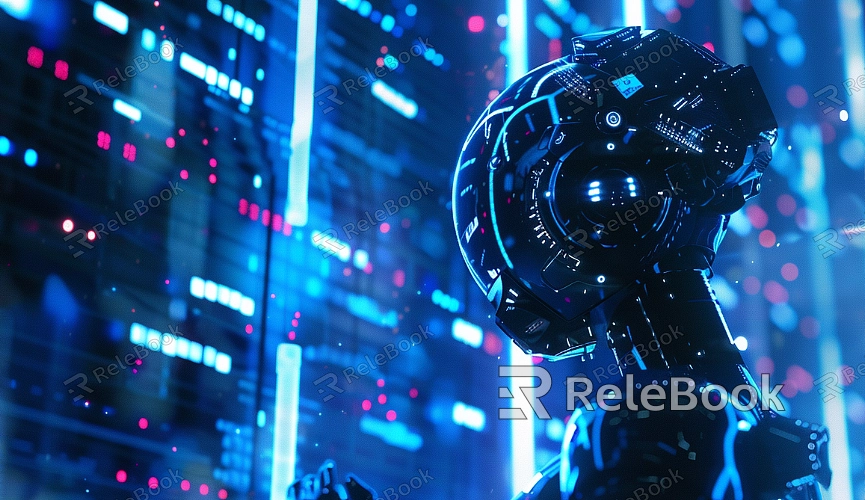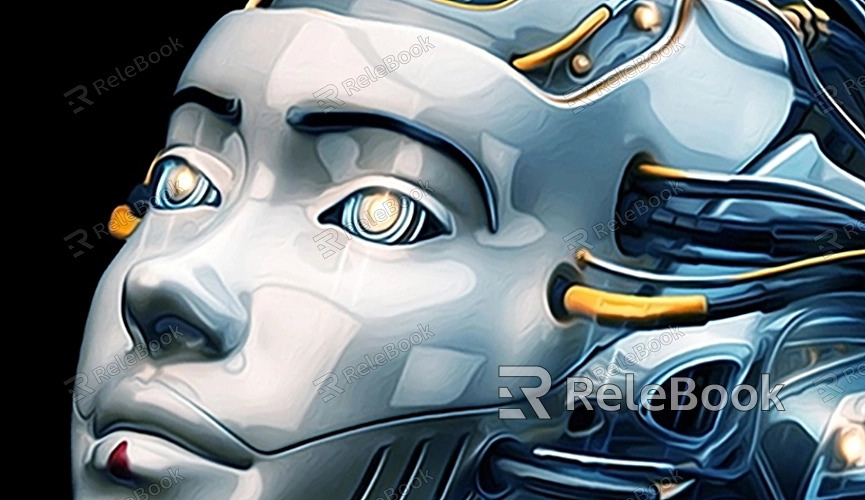What Textures Are Used in Robot Characters Made of 3D
In industries like sci-fi movies, video games, and industrial design, creating robot characters relies heavily on accurate texture mapping to bring out details, realism, and material qualities. When designing these robots, artists use a variety of textures to depict metal surfaces, electronic components, and mechanical joints, among other complex features. The choice and application of these textures directly impact the final appearance of the robot model in 3D software like Blender, 3ds Max, or Maya. This article will explore the most common textures used in 3D robot character creation and how they are applied across different elements.

1. Metal Textures
Metal textures are a fundamental part of many robot characters. The reflective, glossy, and rough qualities of metal make it one of the most common materials used to give robots a realistic look. Proper lighting setups are also crucial to simulate metal’s reflective and refractive properties.
Metallic Gloss and Reflection
When creating metallic materials, key factors such as reflectivity and glossiness are essential. Designers often use reflection maps to simulate the shiny surface of metal. Adjustments to reflection intensity, roughness, and highlights are needed to make the robot’s metal parts appear more lifelike.
Wear and Tear Effects
Robots, especially those involved in combat or long-term use, often show signs of wear such as scratches, rust, and corrosion. These effects are created by overlaying wear-and-tear textures onto metal textures, which can include rust, scuff marks, or scratches, adding to the realism.
2. Electronic Components and Circuit Textures
For robot characters that feature intricate internal circuits and components, textures are used to depict details like circuit boards, electronic parts, wiring, and chips. These textures enhance the technological and complex feel of the robot.
Circuit Board Textures
Circuit board textures are typically characterized by fine lines and metal contact points. High-resolution texture maps are used to create realistic circuit board effects. Designers can base these textures on photos or scans, adjusting transparency, reflectivity, and roughness to achieve an authentic look.
Glow Effects and Light Sources
Some robot designs include glowing electronic components, such as LED lights, displays, or battery indicators. These glowing effects are typically achieved using emissive textures or self-illuminating materials, making light sources in the robot appear vibrant and lifelike.
3. Skin and Synthetic Material Textures
Some robot characters may feature synthetic skin or flexible materials, such as bio-inspired robots or designs that incorporate more organic components. These textures need to simulate the details of skin, synthetic fibers, or plastic-like materials.
Skin Textures and Detail
Skin textures are often made with high-precision detail maps, including fine details like pores, wrinkles, and smoothness. These details allow the robot’s surface to appear softer and more elastic, resembling human skin.
Flexible Synthetic Material Textures
Flexible synthetic materials are typically used to simulate areas like robot joints, arms, and legs that require a more pliable appearance. Designers may use organic textures, glossy textures, or plastic textures to represent these parts with flexibility and movement.

4. Glass and Transparent Material Textures
For robots with transparent or protective coverings, such as display screens, eye shields, or sensor housings, glass and transparent material textures are essential. These materials are typically used in areas that need clarity and visual transparency.
Glass and Transparency Reflection/Refraction
Glass textures require not only transparency settings but also reflection and refraction effects. Designers use transparent maps, reflection maps, and refraction maps to simulate the optical properties of glass materials realistically.
Surface Scratches and Cracks
To make transparent materials look more authentic, designers can add textures of surface scratches and cracks. These small details contribute to the illusion that the robot has been in use or has experienced some wear and tear.
5. Mechanical Joints and Connectors Textures
Mechanical joints and connectors often combine materials like metal, plastic, and rubber. These parts need textures that balance the rigidity of metal with the flexibility of rubber, especially in animation where movement is essential.
Joints and Moving Parts Textures
For robot joints, designers commonly combine metallic textures with rubber or synthetic material textures. This ensures that these parts not only look mechanical but also exhibit flexibility and movement when the robot operates.
The selection and application of textures play a crucial role in creating 3D robot characters. From metal and circuit board textures to skin, transparent materials, and mechanical joints, each texture type impacts the final look of the robot. Whether through detailed surface textures, glowing effects, or wear-and-tear features, textures help designers craft more realistic and dynamic robot models.
If you're looking for high-quality 3D textures or models like SketchUp or 3ds Max for your own projects, Relebook offers a wide range of resources to help you achieve outstanding visual effects in your designs.

